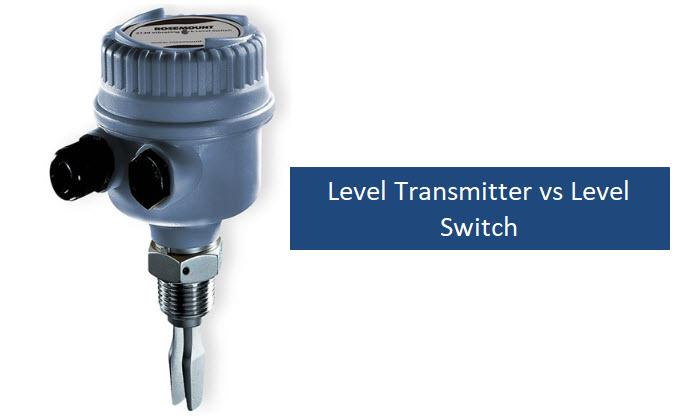How to Choose Between a Level Transmitter and Level Switch?
Brian Craig
December 26, 2019
Level sensing is an important requirement in industries that utilize different types of fluids for functioning. The increase or decrease in the levels of a fluid may alter the results of the end process, or may also adversely affect people and environment around. To avoid this, industry users rely on various types of level sensing devices such as level switches and level transmitters. These devices help users measure the level of fluids accurately and avoid untoward incidents. Although the aforementioned devices are designed to measure the levels of fluids in various applications, they differ in terms of their operation. What is the difference between a level switch and a level transmitter? How to choose the right device for your application? Read the post to find answers.
Working Principle of a Level Switch and a Level Transmitter
The function of a level switch and level transmitter can be understood by their working principle.
- The working principle of a level switch is easy to understand because it works like any alarm switch that turns on/off when the level of fluid goes above or below the predetermined level. When there is variation in the level, the device produces a sound or raises an alarm in some other way. The device works to activate the desired response from a user. The output of a level switch may or may not be voltage-dependent. At times, it may have a voltage-free contact, or sometimes it may have a fixed voltage 0-12 voltage.
- The level transmitter is set with a variable output signal of 4-20 mA. For instance, the level transmitter for a 20-meter high tank will read 20 mA for a full tank, 4 mA for an empty tank, and 10 mA for a half tank. These devices may perform the level measurement in point values or continuously.

Level Switch Vs Level Transmitter – Important Factors to Consider During Selection
Do you think knowing the level switch and level transmitter working principle is enough to make the right selection? No, you need to understand different aspects related to them. The following factors will help you understand it better:
- Measurement: A level transmitter is perfect for a condition where the exact level of fluid needs to be measured. This is usually preferred for applications where precise measurement becomes a necessity. A level switch is an ideal choice for applications where extreme low or high levels need to be measured. These devices help prevent leaks, overfills, and dry situations.
Level switches and level transmitters are distinguished into two categories – point level switches and continuous level transmitters. Some examples of point level switches include optical liquid level switches, horizontal float switches, vertical level switches, and ultrasonic level sensors. Submersible level sensors, ultrasonic level sensors, and capacitive level sensors are a few examples of continuous level sensors.
- Understand Environmental Factors: The choice of a level transmitter or a level switch will depend on various environmental factors such as:
- Pressure and temperature: Effects of temperature and pressure on transmitters or level switches may vary if the material undergoes a transition from one state to another. These devices are available in different materials and designs. So, you need to understand the temperature and pressure impact on a particular material, before selecting them for your application.
- Range of measurement: Continuous level transmitters are used for level sensing dry or liquid materials within a specified range. They measure over a large range of levels which helps the user understand the right amount of substance. Most continuous level transmitters produce an analog output to indicate the level of fluid in the container. Against this, level switches are suited for point measurements.
- Type of output: Level switches and transmitters are suited for producing different types of outputs – relay, analog, and digital.
- Chemical compatibility: These level sensing devices may be used with a variety of liquid media. At times, the housing of the transmitter may come in contact with the media, which may affect its integrity. It is important to address the concern of the impact of different chemical media on sensors.
- Tank size and shape: The choice of level sensing device may also depend on the tank size and shape. Extra narrow or wide tanks may have specific requirements.
A fair consideration of these factors will aid you in making the right selection. Even if you have an understanding and knowledge of these factors and your application requirements, it is still recommended to partner with a trusted supplier like The Transmitter Shop. The company provides various types of new and reconditioned transmitters.
Related Posts
- What are the Advantages of Different Types of Level Measurement Transmitters?
- Types of Level Measurement Transmitters & How Do They Work?
- How to Choose Between a Level Transmitter and Level Switch?
- Radar Level Transmitters: Setup and Working Principle
- Radar Level Transmitters: Types & Industrial Applications
- Radar Level Transmitter Vs Ultrasonic Level Transmitter – Know the Real Difference
- Know How Guided Wave Radar Level Transmitters Work
- How to Measure Pressure, Flow, and Level Accurately in Instrumentation Lines?
- Level Monitoring Solutions for Molten Metal Applications
- Steam Boiler Drum Level Measurement A Comparison of Control System Technologies
- Key Sensors for Monitoring Emissions in Wet and Dry Scrubber Systems
- Complete Hydrogen Gas Safety and Measurement Solutions
- Steam Boiler Drum Level Measurement A Comparison of Control System Technologies
- Furnace Flame Sensor Faults Everything You Need to Know for Safe Operation
- Comparison between Multi Valve Manifolds Block Valves and Bleed Valves
- Furnace Flame Sensor Faults Everything You Need to Know for Safe Operation
- Pneumatic Pressure Controllers: A Safe Choice for Hazardous Areas
- How Can Greenhouse Gas Emissions Be Reduced?
- A Practical Guide to Vacuum Measurement and Operation
- Understanding Electrochemical Detection: Principles, Techniques and Environmental Application
QUICK ENQUIRY







